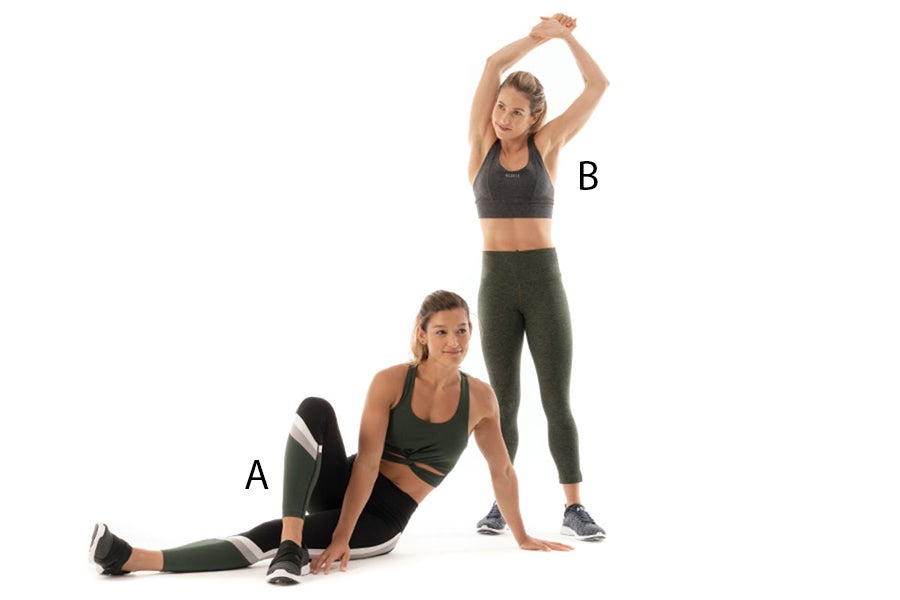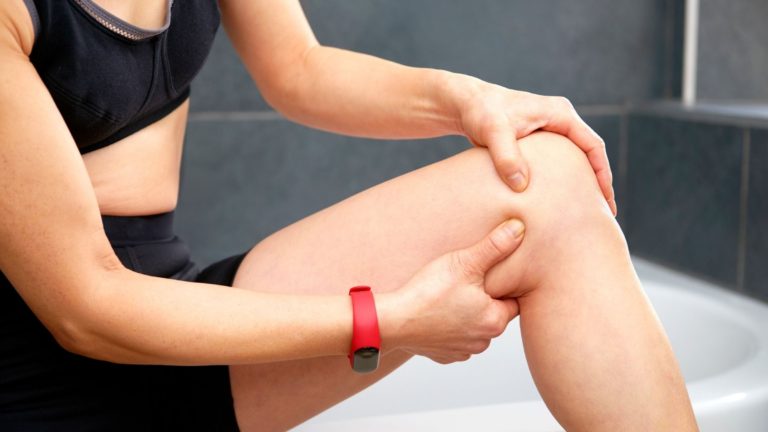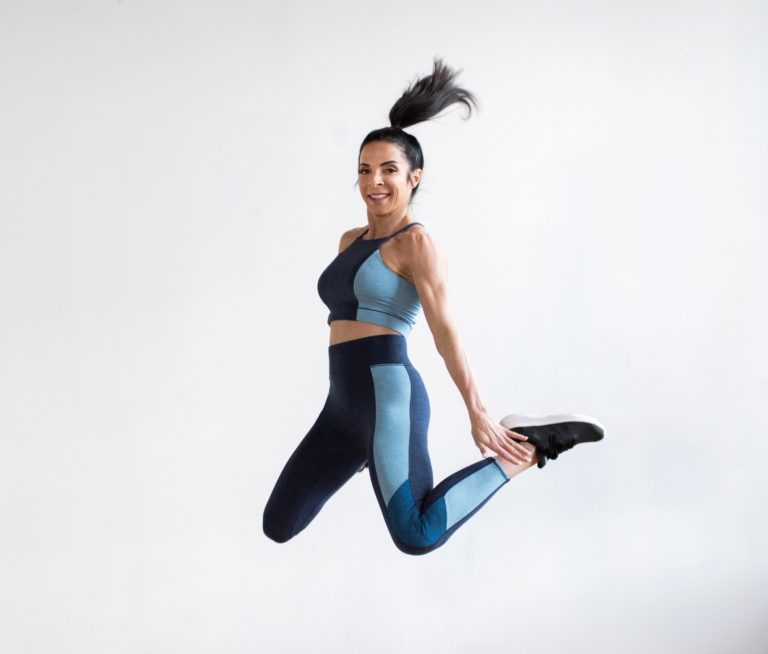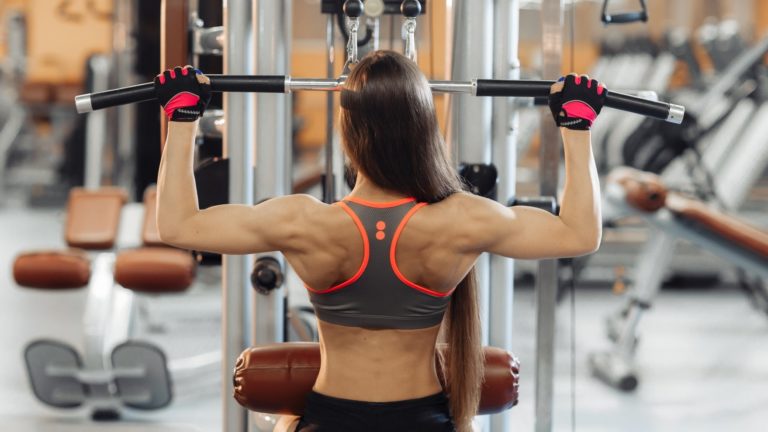
The At-Home Bodyweight Partner Workout
Get access to everything we publish when you
sign up for Outside+.
Sometimes motivation is right in front of you. No, we’re not talking about your social media feed but rather your social circle. Recent research shows that teaming up with a friend, family member or significant other motivates you to exercise harder and longer, improving your chances for success by almost half: Study participants who undertook a yearlong workout program as a pair only had a 6 percent dropout rate as compared to the 43 percent of those who went it alone.
So what are you waiting for? Grab a partner and get moving!
The Team-Building Workout
You and a partner can do this no-equipment-needed workout anywhere — just decide who is Partner A and who is Partner B and get to work, trading places when indicated after your partner has completed her reps.

Do the moves in any order you like, or try the sample workout provided — just keep moving to keep your heart rate elevated and the fun flowing!
| Exercise | Sets | Reps/Time |
| Mirror Squat and Twist | 3 | 15 |
| Wheelbarrow Push-Up | 3 | 10 |
| Leapfrog Burpee | 2 | 8-10 |
| Hamstring-Curl Negative | 2 | 5 |
| Breast Hand Touch | 3 | 60 seconds |
| Tandem Bicycle | 3 | 60 seconds |
| V-Hold + Circle | 3 | AMRAP* |
*AMRAP = As many reps as possible. Partner A does as many reps as she can in both directions, then swaps with Partner B.
The Exercises
Mirror Squat And Twist

Both Partners: Face each other with your feet shoulder-width apart, and extend your left arm in front of you at shoulder height to grip your partner’s forearm. Extend your right arm to the side at shoulder height for balance. Push your glutes back, then bend your knees to lower into a squat as you simultaneously reach your right arm behind you and twist to the right side. Return to the start. Do all reps on one side before switching.
Tip: As you squat down, lean away from one another slightly to counterbalance your weight and intensify the work done by your quads.
Wheelbarrow Push-Up

Partner A: Stand with your feet outside shoulder-width apart, toes turned out slightly, and hold Partner B’s feet in front of you with your arms extended. As Partner B lowers into a push-up, bend your knees, keeping your back straight and dropping your glutes straight toward the floor until your thighs are parallel or just below. Stand and repeat.
Partner B: Place your hands just outside shoulder width and extend your legs behind you one at a time into Partner A’s hands. Your head, hips and heels should be aligned. Bend your elbows, keeping them in close to your sides, and lower your chest toward the floor. Drive through your hands to extend forcefully to the start.
Tip: Make sure your core stays tight so your hips don’t sag, which could strain your lower back.
Leapfrog Burpee


Partner B: Get into plank with your elbows underneath your shoulders and your head, hips and heels aligned. Hold here and breathe while Partner A completes all her reps.
Partner A: Stand to one side of Partner B. Crouch and place your hands on the floor, jumping your feet behind you. Do a push-up, then jump your feet underneath you and immediately leap laterally over Partner B to the other side. Drop right down into your next burpee and repeat, alternating sides.
Tip: If you’re not sure you can clear your partner when leaping over her, do yourselves both a favor and step over her carefully with one foot at a time instead!
Hamstring-Curl Negative

Partner B: Sit behind Partner A and kneel on the soles of her shoes (without crushing her feet). Place your hands on her calves and use your bodyweight to keep her legs in place firmly as she executes the exercise.
Partner A: Kneel on the floor with your legs hip-width apart and raise your hands in front of your shoulders, elbows bent. Once anchored firmly by Partner B, hinge at your knees and lower your upper body and hips as a single unit toward the floor as slowly as you can. Land softly, using your hands to cushion your fall. Walk your hands back to your knees and sit back up to the start.
Tip: If you bend at your hips, you’ll put the work onto your back instead of your hamstrings, tempting injury. Instead, imagine your torso, hips and thighs are fused together in a straight line.
Beast Hand Touch

Both Partners: Get on all fours facing each other with your hands underneath your shoulders and your knees underneath your hips. Turn your toes under, then press down into your toes and hands so your knees are hovering just above the ground, back straight. Hold here as you slowly raise your left hand and tap your partner’s in front of you. Then reach underneath you and, without rounding your back, touch your opposite knee. Replace your hand and continue, alternating sides.
Tip: You can glance up every few reps to make sure you’re in sync and that your hands will touch at the same time, but try your best to keep your head and neck neutral.
Tandem Bicycle

Both Partners: Lie faceup opposite one another. Bend your knees and place the soles of your shoes together so your shins are parallel with the floor and your legs make a 90-degree angle. Place your hands lightly behind your ears, then curl up and twist to the left as you extend your right leg straight out. Return to the start and continue, alternating sides.
V-Hold + Circle

Partner A: Sit facing Partner B with your knees bent and your feet flat on the floor (not shown). Place your hands behind you and lean back slightly, lifting your legs so your shins are parallel to the floor, feet together. Hold here as Partner B completes her reps.
Partner B: Sit facing Partner A with your knees bent and your feet flat on the floor (not shown). Place your hands behind you and lean back slightly, lifting your legs so your shins are parallel to the floor, feet together. Keep your back straight and your upper body steady as you slowly circle your feet around Partner A’s feet, keeping your legs together. Perform reps in both directions.
Tip: Really challenge yourselves and never let your feet touch down: Once you’ve completed your circles, keep your legs raised and go right into your V-hold as your partner completes her circles.
Partner Perfection
Finding the perfect workout partner can be challenging. Here are some tips backed by science to help you find the yin to your yang.
Level up. According to a recent study, training with a partner who is more fit than you are can increase the duration and intensity of your workout by as much as 200 percent! Just make sure the difference between your levels is not ginormous, or else you’ll both be frustrated by your partnership.
Get competitive. Research published in the Annals of Behavioral Medicine found that women exercised longer when a competitive partner was present to push them past their comfort zone. This even works digitally: JAMA Internal Medicine reported that adding a competitive or game-like element to a wearable device or app increased the amount of time participants spent being active.
Enlist an emotional friend. Research from the University of Aberdeen found that working out with an exercise companion who was emotionally supportive increased the frequency and duration of exercise.
Train with someone you like. It might sound obvious, but a study from the University of Southern California found that people who worked out with friends reported enjoying exercise more, and research in the International Journal of Stress Management reported that people exercising on a stationary bike with a friend felt calmer postworkout than those who cycled solo.
Pay attention. Experts agree that a good training partner should be able to point out form flaws in a constructive — not critical — way to both improve results and prevent injury.
Consider your significant other. A study published in JAMA Internal Medicine found that romantic partners who teamed up for workouts were more likely to succeed, while other studies indicated that couples feel more attracted to each other after exercising together since many of the physical symptoms of exercise mimic those of sex — increased heart rate, flushed skin, sweat … you get the picture.
Go to the dogs. A study from Purdue University found that pet owners are more active overall than people who don’t own dogs, and other research revealed that people are more likely to take regular walks with a canine companion than they are with a human one!
Be virtually real. A study from the Society of Behavioral Medicine found that just knowing that someone is exercising with you, even if they are in a different location, increased workout duration and motivation. Look for a partner or group of like-minded folks on sites such as Meetup.com or WorkoutBuddies.com.
Avoid someone if they…
- Do nothing but complain during the workout
- Pay more attention to their phone than to your form
- Are late or flake out on a regular basis
- Are overly chatty and never stop narrating their day
- Have completely different goals than you do
- Are complacent and do not push themselves or you to work harder and improve
- Are of a drastically different fitness level than you are
Published at Mon, 14 Feb 2022 02:33:25 -0800






